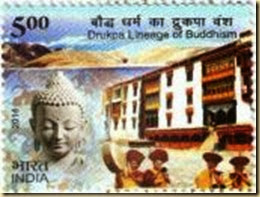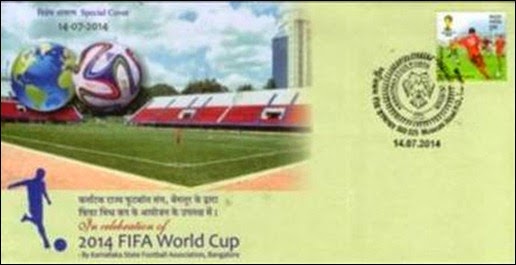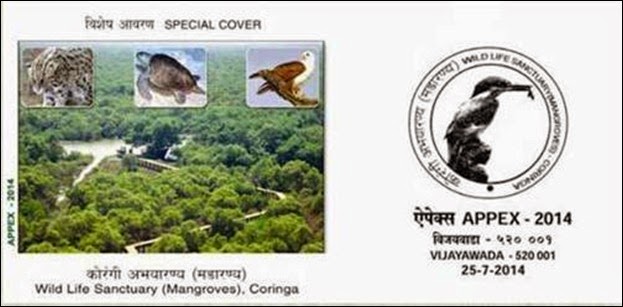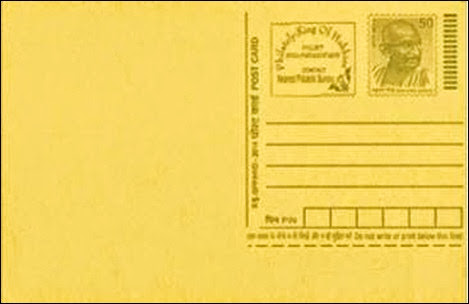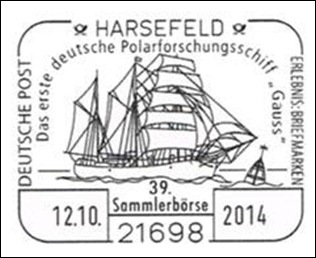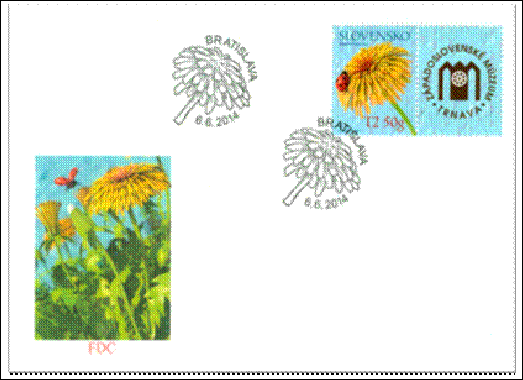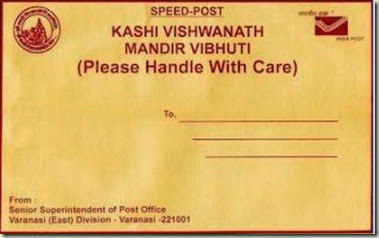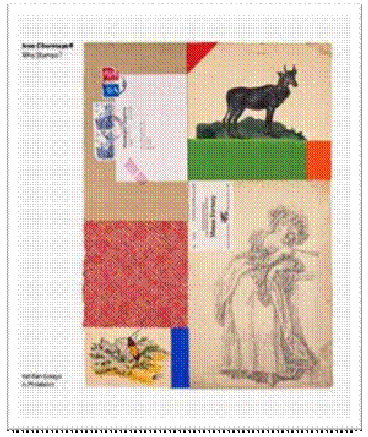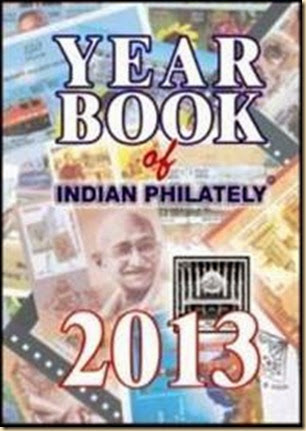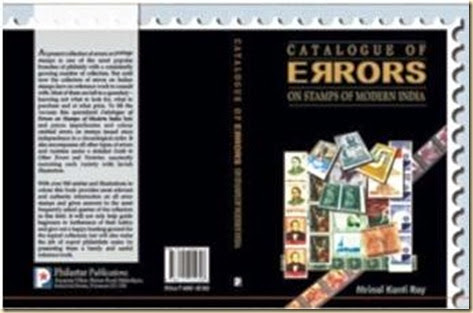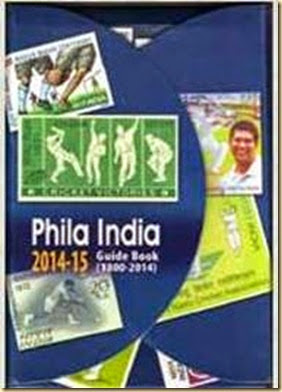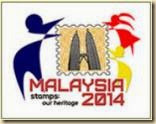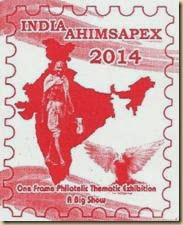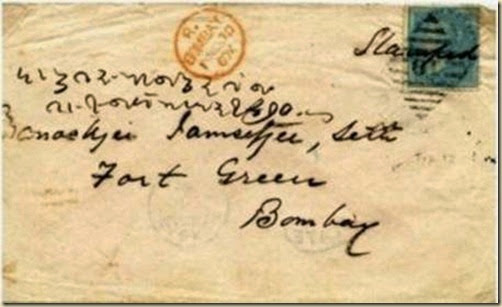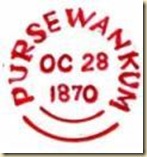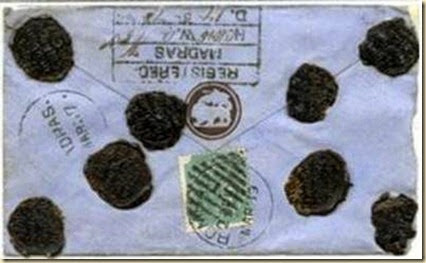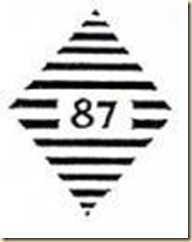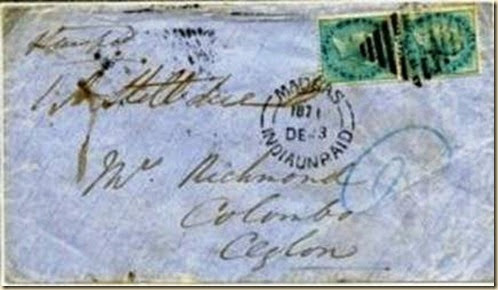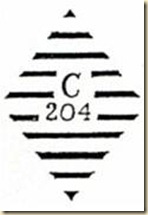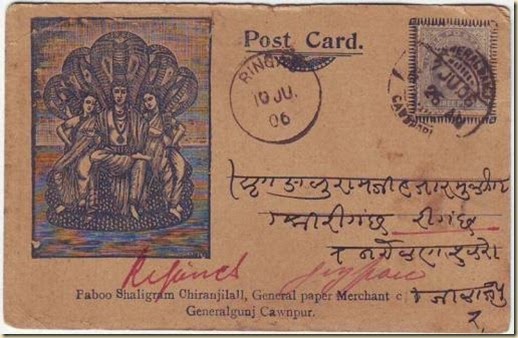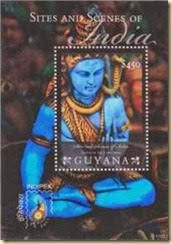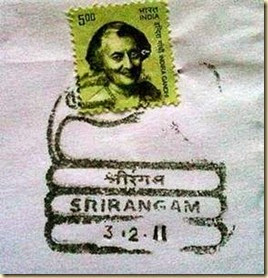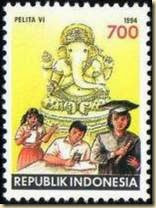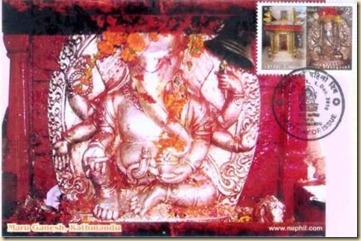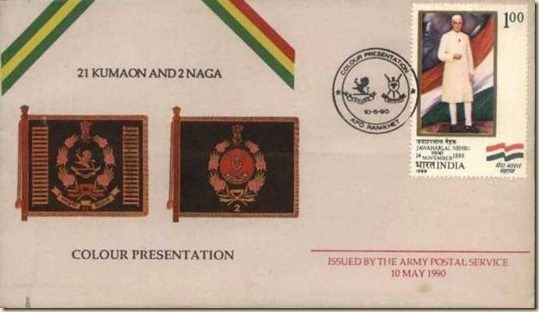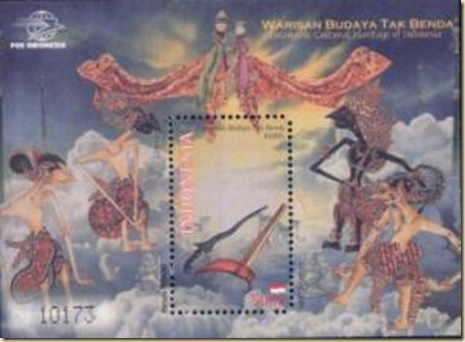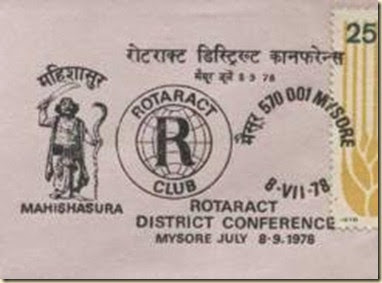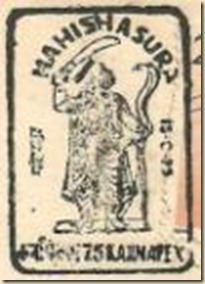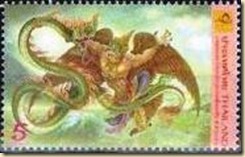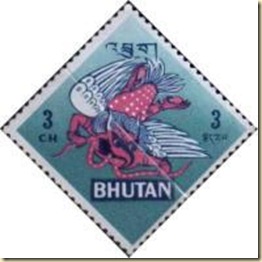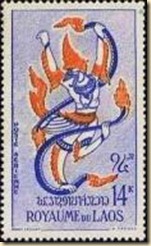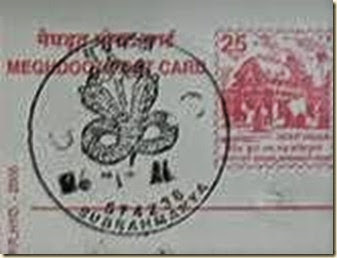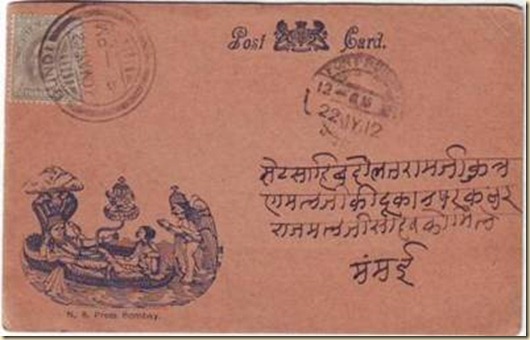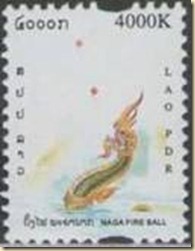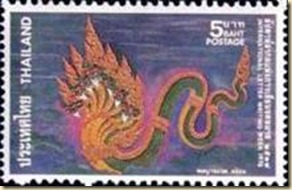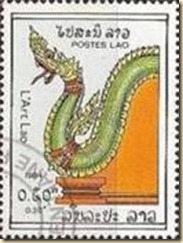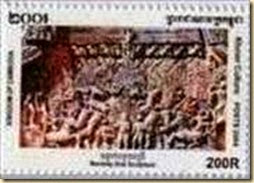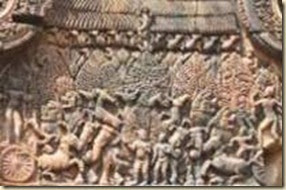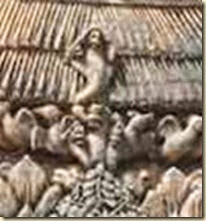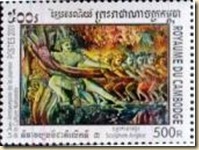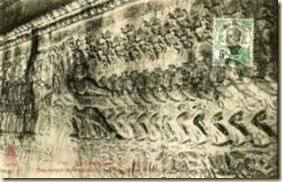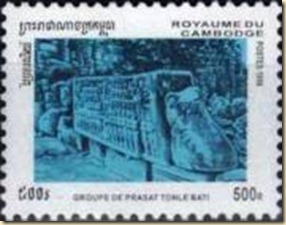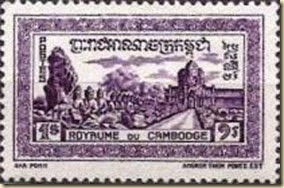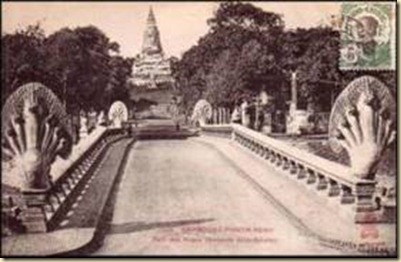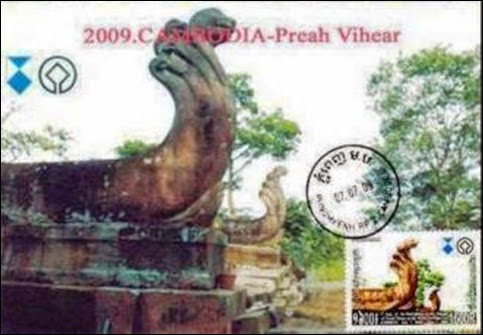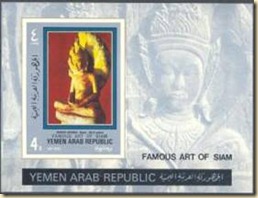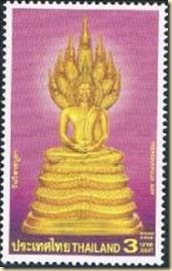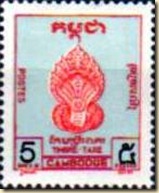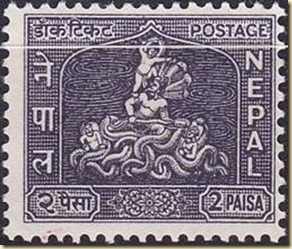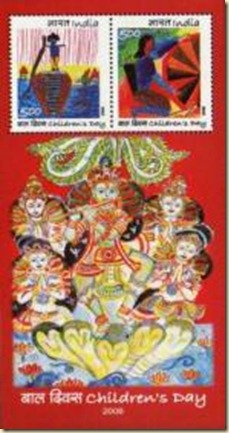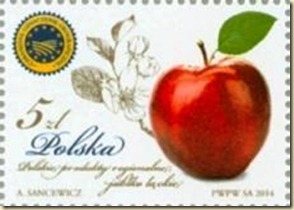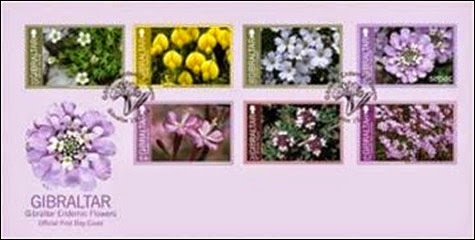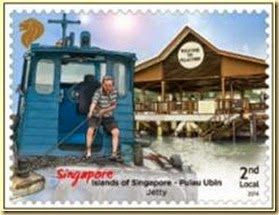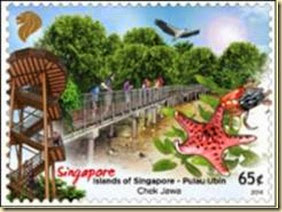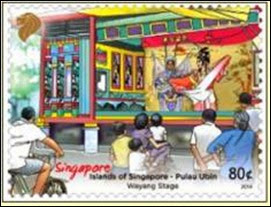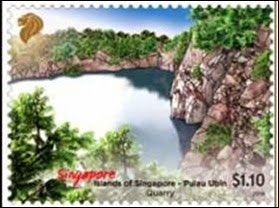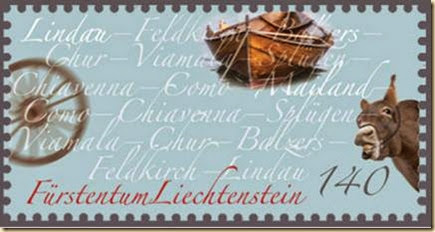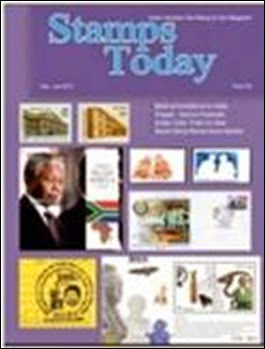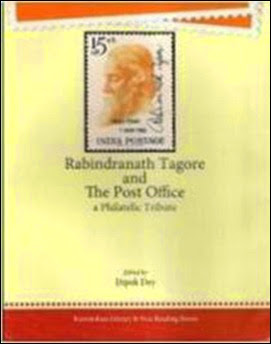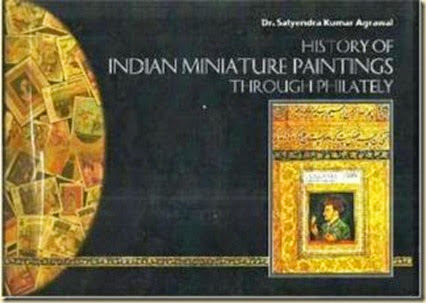Glasgow 2014 - XX Commonwealth Games, Scotland
23 July to 3 August 2014
Dehradun August 2014 Vol. VII Issue # 80
Monthly e-Stamp Bulletin Edited by Jeevan Jyoti for free circulation among philatelists
Readers are requested to send reports of philatelic activities in their area for publication. Short write ups by the readers about their journals, societies, publications and philatelic requirements can be sent for inclusion in this bulletin to j.jyoti9@gmail.com and by post to –
Ms. Jeevan Jyoti, c / o Mr. Ajay Srivastav, Wildlife Institute of India, Post Box No. 18 Chandrabani, Dehradun – 248001. India
Note- This bulletin is only for circulation among a limited group of philatelists without any commercial purpose. The bulletin will be sent to the readers only on request. Those who wish to receive it regularly please reply giving the name of your city / country with the subject SUBSCRIBE RAINBOW
Dear Reader,
I am pleased to release August 2014 Issue of Rainbow Stamp News. Once again philatelic activities will be held in coming few months with some stamp exhibitions at different places organized by Deptt of Posts and Philatelic Societies. I wish all the best to the participants and organizers. “My Stamp” facility is being provided at many places by India Post. To make it popular among general public the price of My Stamp must be reduced and publicity should be given in post offices and schools about it. So that children and people from all walks of life can get the opportunity to have stamps with their photo. In this issue read a special article “ Mythical Serpents ” by Dr SK Agrawal with regular column of Mr Naresh Agrawal and article series of Dr Avinash B. Jagtap.
This is all for this month….More in next issue…...
Happy Collecting ! !
-- Jeevan Jyoti
Contents
· From the Desk of Naresh Agarwal
· Recent Indian Issues
· In The News
· Beginners’ Section
· Specialized Section
· New Issues from Other Countries
· The Lighter Side
· Philatelic Clubs and Society
· Blogs & Websites on Philately
· Promotional Section
· Current Philatelic Magazines – Newsletter
 From the Desk of Naresh Agarwal
From the Desk of Naresh Agarwal
IMPACT OF NUMISMATICS ON PHILATELY
About 15 years back, philately was the only hobby which used to sound anywhere and everywhere in the field of hobbies. It was the world of stamps and other related material which ruled the hearts of everyone from 6 to 96. But of late, the scenario has changed. The new generation communication means have changed the inclination. The life style has changed the thoughts. And so to say philately has been pushed aside and the hobby pattern, style and mythology of recreation has drastically changed. In my last article, I had discussed about this only. But while discussing this, I had one thing in my mind, there is another force to which has played and is playing a big role to push philately away. It is Numismatic. Yes, about 15 years back the numismatic lovers had no big platform. They were just under the shadow of philately. It will not be wrong if I say, it is philately which hold the hand of numismatic to bring it to the light but now numismatic has been so brightly lightened that philately seems to have gone in to its shadow. Those were the philatelic shows where numismatic was allowed to enter, later to be displayed .The philatelic dealers were also allowed to sell numismatic products. Of late, I have seen even the hardcore philatelic dealers have turned in to numismatic dealers or have started dealing in numismatic products.. For them economy and profitability or to say survival is important but this changeover has cleared one thing those collectors are changing their interest. They are now more inclined towards numismatic. It is known that a philatelist has a hidden numismatist in him too but due to various reasons that hidden interest is coming on the surface. I too have a good numismatic stuff in my possession and truly speaking, I have started spending some time on that too. Numismatic information has also started catching my attention. I have seen my friends turning towards numismatic from philately. Numismatic clubs are being formed at various places even in my state. One can see the voice of numismatic by the philatelists in social media also. Face book is the one medium where one can see a good lot of talks and display of numismatic by philatelists.
One can see that there are philatelic and numismatic offices at many places of the world. Various dealers now write philatelic and numismatic dealers. Clubs and Societies are being formed to cater both philatelists and numismatists. Now numismatic shows are getting preferences over philatelic ones. One can see good number of such shows being organized all over. Various books and periodicals on numismatists are being published in good quantity and are being appreciated too. Publishers too prefer Numismatics than philately looking in to sales prospects.
Where exactly this transformation and change over will lead to? It is time to think upon this. At one hand there are new generation communication systems and on the other it is Numismatic. How long the sandwiched philately will survive?. Let’s save philately. Let’s do something to re-crown the hobby of kings.
Let’s think upon it. Seriously…………..
- Naresh Agarwal : email : nareshkumar1992@yahoo.co.in
Recent Indian Issues
· 11 February 2014 : Central Vigilance Commission – Rs 5
· 25 February 2014 : Hasrat Mohani – Rs 5
· 25 April 2014 : National Council of Churches in India - Rs 5
· 30 April 2014 : 50 years of Govind Ballabh Pant Hospital, Delhi – Rs 5
· 30 April 2014 : Chattampi swamikal – Rs 5
· 14 May 2014 : Drukpa Lineage – Rs 5
· 12 June 2014 : FIFA World Cup 2014 – 2 x Rs 5 + 2x Rs 25 + MS
Recent Special Covers
15 June 2014 : Braille Edition of ‘Apprenticed to a Himalayan Master – A Yogi’s Autobiography’
and the Walk of Hope 2015-16 (Manav Ekta Mission)
19 June 2014 : Diamaond Jubilee of Coir Board - Kochi
23 June 2014 : 175th Year of St Mary's Anglo Indian Hr. Sec. School . Chennai
25 June 2014 : Bhagwan Mahaveera Kewal Gyan Bhumi Rijubalika Tirth
22 June 2014 : Natya Kalanidhi Guru A.T. Govindraj Pillai Birth Centennary – Mumbai
26 June 2014 : "Right to Go - Toilets for Every Home"- Mumbai
28 June 2014 : 'Celebration - Winner of 3 trophies' ( Cricket ) – Bangalore
1 July 2014 : National Academy of Agricultural Research Management (NAARM) - Hydearabad
1July 2014 : Doctor’s Day- Chennai
14 July 2014 : In celebration of 2014, FIFA World cup – Bangalore
15 July 2014 : Centenary Celebration of Dr. V. S. Rishi - Chennai.
18 July 2014 : " Gandhi:- Centenary of Start of Journey to India" - Special cover released by
Chhattisgarh Philatelic Society, Raipur
19 July 2014 : Diamond Jubilee Celebrations of All India Federation of Master Printers (AIFMP)
- Sivakasi
24 July 2014 : Centenary of the Red Building, Chennai
24 July 2014 : APPEX 2014 - the textile craft of Machilipatnam -Vijayawada
25 July 2014 : APPEX 2014 - Wild Life Sanctuary (Mangroves, Coringa)- Vijayawada
25 July 2014 : APPEX 2014 – NREGA - Vijayawada
25 July 2014 : Gandhipex-2014 – Ahmedabad
26 July 2014 : 158th Anniversary of Bal Gangadhar Tilak – Patna
Forthcoming stamp issues for July to November 2014 declared by India Post
1. Liver Transplantation in India - July/August 2014
2. Musicians of India - (i) Ravi Shankar, (ii) Bhimsen Joshi, (iii) D. K. Pattammal, (iv) Gangubai Hangal, (v) Kumar Gandharva, (vi) Vilayat Khan (vii) Mallikarjun Mansur (viii) Ali Akbar Khan - August, 2014
3. Gaiety Theatre Complex, Shimla - August, 2014
4. Kendriya Vidyalaya Sangathan - September, 2014
5. UTI - October/November, 2014
New Postal Stationery : 50 p. Single Post Card
A new 50 p. Single Post Card with Mahatma Gandhi motif, 'Philately: King of Hobbies' advertisement and inscription SPP/HYD-2014 has been released by India Post.
New Pictorial cancellations from Germany
On August 29th, 2014 a new pictorial cancellation will be issued in 53113 BONN. The cancellation is featuring a flying white stork (Ciconia ciconia).
On September 6th 2014 a new pictorial cancellation will be issued in 98617 MEININGEN. The cancellation is featuring a steam locomotive.
On September 13th 2014 a pictorial cancellation will be issued in 66399 Mandelbachtal.The cancellation is featuring the airplane BOEING B-17 (Flying Fortress).
On October 12th 2014 a pictorial cancellation will be issued in 21698 Harsefeld.
The cancellation is featuring the ship GAUSS.
Interested philatelists may please contact: Wolfgang Beyer, Vice Chairman of the German Collector Group ARGE Zoologie. Mail:Wolfgang.beyer1@aol.de.
Postage rates: 0,75 Euro AIRMAIL, 2,90 Euro Registered AIRMAIL.
In The News
Special stamp on Germany’s victory in 2014 FIFA World Cup
Germany's football World Cup in 2014 - an impressive success, which is also honored with a special stamp. Germany was so confident it would win the World Cup that it pre-printed a run of five million stamps commemorating its soccer victory before the final game even took place.
Just hours after Germany’s victory in Rio de Janeiro, the German Finance Ministry presented a new stamp honoring the new World Cup champions on Monday.German Finance Ministry spokeswoman Marianne Kothe said of the decision to print the stamps in advance: “We always firmly believed in a success of the German team.”
Postage stamp with a personalized coupon issued by Slovenská pošta
The postage stamp, with a personalized coupon, represents postal stationery that is officially issued within an issue plan of Slovenská pošta, a.s. It is designed for the payment for posting of postal items together with or without the coupon, during the whole period of validity of a postal stamp. Being a bearer of personalized print and separated from the stamp through perforation, the coupon is not valid separately.
The first stamps with a personalized coupon were issued by an Australian postal office at the occasion of the international exhibition of postal stamps in Melbourne in 1999. The first such stamp titled “Congratulation” was issued in Slovakia on July 4, 2002.
Apart from its use for postal services, the postage stamp with the personalized coupon has also an attractive commercial character, offering its user a possibility to participate in its creation. While for companies it is a form of original promotion, for individual users, it represents a pleasant way how to delight their relatives.
The motif of print on the coupon can depict a portrait, company logo, club brand, coat of arms, animal, or other occasional visual or textual theme, which is not contrary to legal, ethical, and moral standards. It also does not lead to a possible violation of fundamental civil rights and freedoms.
Euromed Postal - The Mediterranean Sea
Malta Post issued a stamp on 9th July which Marks the co-operation between members of the Postal Union for the Mediterranean (PUMed) through a joint stamp issue entitled 'The Mediterranean Sea'. A number of postal operators within PUMed, also known as Euromed, are issuing stamps bearing 'The Mediterranean Sea' as a common theme. The stamp features the Mediterranean Sea and its surrounding countries.
Amany Ahmed Ali of Egypt Post Postal Printing House designed the stamp. Her stamp was chosen in a contest among six member countries including Cyprus, Egypt, Lebanon, Malta, Morocco and Slovenia. The winning stamp is being issued in Cyprus, Egypt, France, Greece, Jordan, Lebanon, Libya, Malta, Morocco, Palestine, Slovenia and Syria.
The creation of PUMed marks the Mediterranean region as a political, economic and social area .Having a structured and organised body enables a high level of multilateral cooperation.
Faced with an ever-changing postal industry, members within PUMed have come together so as to develop projects that will help each postal operator keep up with the challenges of the market. The joint stamp issue therefore symbolises PUMed's intention to co-operate and work together for the benefit of each individual country.
PUMed was officially established on 15 March 2011 and its headquarters are stationed in Malta. The Universal Postal Union currently includes 20 postal operators across the European and Mediterranean region, namely Croatia, Cyprus, Egypt, France, Greece, Italy, Jordan, Lebanon, Libya, Malta, Mauritania, Monaco, Morocco, Palestine, Portugal, Slovenia, Spain, Syria, Tunisia and Turkey besides another 172 member countries worldwide.
BALTEX 2014 – one of the most important stamp exhibitions of this year
BALTEX is a Swedish national stamp exhibition in Malmö 29-31 August 2014. The exhibition has FEPA recognition, and with 700 frames and about 20 dealers, it should be well worth a visit.
The exhibition takes place in Slagthuset i Malmö which is centrally located in the city and next to Malmö Central Station. The exhibition will feature a total of about 800 frame sides, about 25 dealers are expected
In addition to the national exhibition, the worldwide national-team contest “Seven Nations Challenge” is being arranged at the same time, which will attract important international visitors and exhibitors to Malmö.
The latest “Seven Nations Challenge” in May 2012 in Australia was conquered by Sweden and famous and talented philatelists. As the reigning champion Sweden has accepted the honor and challenge to be the host this time.
For BALTEX 2014, seven countries are invited to select their very best philatelists to show and compete with their exhibits. In addition to Sweden the participants are Denmark, Australia, USA, UK, Germany and Belgium.
“The Faroese Boat” stamp honored with the Olympic Academy Prize for Culture
Faroese mini-sheet “The Faroese Boat” issued by Faroese Post has been awarded with the Olympic Academy Prize for Culture by the Jury of the 44th Asiago international Award for Philatelic Art.
“The Faroese Boat” was designed by Edward Fuglø and engraved by Martin Mörck. The Faroe Islands Postal Service issued this sheetlet of 9 stamps that have postage value of 7KR on the 25th of February 2013. The stamps were designed to remind the people about the history of the Faroe Island light boats and how they were build and used.
The traditional Faroese rowing boat is a clinker-built boat. Clinker building is the old Nordic method of building boats with overlapping wooden planks. Using this construction, Norsemen built their boats over one thousand years ago, and with them the Vikings sailed and left their mark on settled as well as yet unexplored lands in the North Atlantic.
The Faroese boat has the characteristic features of the Nordic clinker-built boat; it is pointed at both ends and of a light construction. The shape of the boat’s hull is similar to that on a Viking long ship. The boat is regarded by many as the best example of Faroese craftsmanship there is, and the boat is considered one of the most attractive and flawless boats in the world.
My Stamp facility at Vadodara Philatelic Bureau, Vadodara H. O. – 2nd July 2014
My Stamp facility has been made available at Vadodara Philatelic Bureau (Vadodara Head Post Office) from 2nd July 2014. A function was organized at Vadodara Head Post Office to inaugurate the My Stamp Facility Counter and launch of My Stamp at Vadodara Philatelic Bureau.
India Post launched new website for Philately
Department of Posts, Ministry of Communications & Information Technology, Government of India has launched new website for Philatelic Information which is www.postagestamps.gov.in
Get Prasad of Kashi Vishwanath Temple by Post
The Postal Deptt. Has arranged to send Prasad of Kashi Vishwanath Temple, Banaras and Mahakaleshwar Temple, Ujjain by speed Post to any part of the country, The devotees can get Prasad by sending a MO for Rs 60 to SSP (Post) , Varanasi ( East) Division. Prasad includes Bhabhuti, Rudraksa, laminated photo of Lord Shiva and Shiva Chalisa.
New Publications
The Kat Ran Press has released a new book, Why Stamps? by Ivan Chermayeff.
As part of its "Essays in Philatelics "series it focuses on the philatelic work of type and graphic designers. Other books in the series include Designing the Mentoring Stamp, Notes on Postage Stamps, Postage Stampsand Philatelic Atrocities.
According to press release, "A good graphic designer pays attention to small things, and there are few things smaller than stamps. Ivan Chermayeff has been paying attention. For almost fifty years the acclaimed graphic designer has been making collages—and in those collages stamps and mail have played an important role. Envelopes are heads. Stamps are eyes and lips. However, one could be forgiven for never having noticed this, as the whole in Chermayeff's collages is greater than the parts.
"In Why Stamps? Chermayeff calls attention to the parts with a brief essay on postage stamps and a selection of fourteen collages which use stamps and mail to the best possible effect. Also shown are two of Chermayeff's smallest cut-paper collages: Stamps for the USPS and Royal Mail."
About Ivan Chermayeff. A prolific designer, illustrator, and artist, Ivan Chermayeff has created memorable and iconic images for hundreds of clients. He is a founding partner of Chermayeff & Geismar & Haviv, a leading graphic design firm in the fields of corporate identity, brand development, and logo design that has produced logos for NBC, PBS, Mobil, and the Museum of Modern Art.
Year Book of Indian Philately : 2013
By Madan Middha
Year Book of Indian Philately: 2013 by Madan Middha Pages 271- Published by Vishesh Prakashan, Topi Bazar, Gwalior. Price Rs 300
Year Book of Indian Philately: 2013 by Mr Madan Middha has been released. The book features every aspect of Indian Philately like articles on Indian Philately related subjects, listings of special covers, stamps, postal stationery, exhibitions, award winners etc. In this edition articles by renowned philatelists have also been published. The list of important articles is given below :
- Indian Telegraphs – A tribute by Ilyas Patel,
- Indo-Pak Mails – Arrangements after partition of 1947 by Ashok Kumar Bayanwala,
- Azad Hind Stamps by Naresh Agarwal,
- Mahatma Gandhi, 1948 issues by Sudhir Jain,
- Indian Watermarks by Madan Middha,
- Window Delivery by Rajesh Paharia,
- Smart Money Order by Prashant Pandya,
- Unusual Stamps : Cloth Stamps by Ramarathnam K.
- Special article on “My Stamp” and “R.M.F.M. Metermarks”.
- Terms Unexplained by Year Book Editorial Team
- Rejoinders – Ungummed Definitives of India by P.G. Heda ; My Stamp by Editorial Team ; R.M.F.M. Meter Marks by Editorial Team
The book covers information on philatelic events of year 2013. Award List of international exhibitions, forthcoming international exhibitions, Indian stamps, postal stationery, Army covers, Special covers and postmarks issued during the year 2013 have been listed in the book. Information on Postal History events, exhibitions, society news has also been included in the year book.
Philatelic Tid – Bits is a very interesting section of this book. This section covers some very interesting news of the year 2013 of the philatelic world. One can find many uncommon and eye catching subjects in this section like SMS postage stamps, First Underground Post Office, news on academic recognition to philately, New Methods to check Rare Postage stamps and many more news items. It is a perfect book for all stamp lovers especially those who wish to get complete information about 2013 events of the Indian Philately. As the book covers each and every aspect it will prove very useful to every stamp collector from beginner to specialized collector. The paper, printing and layout of the book is very nice. I am sure the book be an asset for all stamp collectors. This book is recommended to all philatelic libraries philatelic societies and stamp clubs as well as to the libraries of schools and colleges for students.
The preface of this edition highlights the “Frustrations of a Philatelist” who are concerned with the future of their philatelic belongings and the hobby in general. Some important and thought provoking issues are taken by the editor.
2013 edition of the “Year Book of Indian Philately” is available with Mr Madan Middha The price of the year book is Rs. 300 inclusive of postage in India.Readers may contact : Mr Madan Middha, Saket Vihar, Phalka Bazar, GWALIOR - 474 001. email : madan_middha@yahoo.co.in
Earlier editions of the Year Book have won a number of Regional, National & International Awards It has won a Silver Medal at the IPhLA 2012 at Mainz, Germany; also a number of other awards at FIP & FIAP philatelic exhibitions held in last few years.
Catalogue of Errors on Stamps of Modern India – by Mrinal Kanti Ray
At present collection of errors on postage stamps is one of the most popular branches of philately with a consistently growing number of collectors. But until now the collectors of errors on Indian stamps have no reference work to consult with. Most of them are left in a quandary – knowing not what to look for, what to purchase and at what price.
Shri Mrinal Kanti Ray well know philatelist and author has published ‘Specialized Catalogue of Errors on Stamps of Modern India’ which lists and prices imperforates and colour omitted errors on stamps issued since independence in a chronological order.
The Catalogue was released at New Delhi on 7th June 2014.
Phila India Guide Book 2014 -15
Phila India Guide Book 2014 -15 Publisher : Manik Jain, Phila India Kolkata
Philatelic Exhibitions
MALAYSIA 2014 - 29th Asian International Stamp Exhibition and World Youth Malaysia 2014
MALAYSIA 2014, the 29th Asian International Stamp Exhibition and World Youth Malaysia 2014 will be held from 1 to 6 December 2014 at the Kuala Lumpur Convention Center. Prof. Sahadeva Sahoo is the Commissioner from India for this exhibition.
Official Website : http://malaysia2014.com.my/
Details of the exhibitions are available at following link :
http://rainbowstampclub.blogspot.in/2014/01/malaysia-2014-29th-asian-international.html
For more info please contact :
Prof. Sahadeva Sahoo
'Saswat', D-3, B. J. B. Nagar,Bhubaneswar 751014
Phone +91674 2432251 Mobile +91 9337103542
email : sahadevas@yahoo.com
PHILAKOREA 2014 - World Stamp Exhibition will be held in COEX Hall A, Seoul from 7-12 August 2014.
Website : http://www.philakorea.com/
Mr Surendra A. Kotadia is the National Commissioner for India. He may be contacted at following address.
SURENDRA A. KOTADIA
DIMPLE DRUMS & BARRELS PVT LTD , 1119 MAKER CHAMBER – V
221 JAMANALAL BAJAJ ROAD , NARIMAN POINT ,MUMBAI 400 021 INDIA
TELEPHONE + 91 22 22024130/31 MOBILE + 91 98199 03789 FAX + 91 22 22843275 E-MAIL - surendrakotadia@gmail.com
ODIPEX 2014
Odisha State Level Philatelic Exihibition ODIPEX, 2014 will be held in Bhubaneswar from 22 - 24 August, 2014. Odisha Circle has decided to hold a Dealers meet on this occasion.
DEAELERS MEET IN ODIPEX, 2014
1. Dealers registration fees for table charges -Rs 2000/- for 3 days per dealer excluding accommodation.
2. Each person registered, will be provided a free Lunch every day of the event.
3. It has been decided to allot 20 booths during the event. The participation will be on first come first serve basis. It is requested that after receiving the registration fees by draft ( drawn in favour of DDM, PLI, Bhubaneswar) in the following address allotment will be provided. An application may be written for allotment with corresponding address to intimate the allotment of booth by the Department.
4. The ODIPEX correspondence address
Mr Satyabadi Biswal,
Deputy Divisional Manager, PLI
Office of the CPMG, Odisha circle
Bhubaneswar-751 001
Email: ddmplior@gmail.com ; ddmpli-odi@indiapost.gov.in
Telephone number- 0674-239000
Stamp Exhibition on Mahatma Gandhi
A stamp exhibition India Ahimsapex 2014 ( One frame national philatelic exhibition on Mahatma Gandhi and Freedom Fighters) on Mahatma Gandhi. organized by Lucknow Philatelic Society will be held from 30 September to 2 October 2014 at UP Rajkiya Abhilekhagar, Mahanagar Lucknow .
For more details contact : S.A.M. Zaidi email : lkophilsociety@gmail.com Ph. 9335241891, 9452270133, 9839266243
District and Circle level Exhibitions in Karnataka
A Circle level Exhibition is proposed to be held at Madikeri from 10th to 12th October 2014. It will include Kodagu, Mangalore, Udupi, Puttur and Tumkur Circles.
Suvarna Kaveri Pex 2014-15, a District Level Philatelic Exhibition will be held at Nanjaraja Bahadhur Choultry, Mysore on 09th to 10th August 2014, in joint collaboration with Nanjangud, Mandya and Kolar Postal Divisions.
Obituary
Our contributor, Mr Ambrish Kumar Allahabadi lost his wife Smt Mukta Saxena on 8th July 2014 . Our deepest condolences to Mr Ambrish Kumar and all his family members. May god give them strength to bear this great loss....and her soul rest in peace .
Noted philatelist of Gujarat Passed Away
 Shri H.C. Mehta, renowned philatelist of Nadiad, Gujarat passed away on 11th July 2014.He was not feeling well for the last few months. The name of Mr Mehta is very much familiar as his articles are regularly published in Vadophil, GPA Newsletter and other philatelic magazines. His sad demise is a great loss to Indian Philately. We express our heartfelt condolences to all his family members.
Shri H.C. Mehta, renowned philatelist of Nadiad, Gujarat passed away on 11th July 2014.He was not feeling well for the last few months. The name of Mr Mehta is very much familiar as his articles are regularly published in Vadophil, GPA Newsletter and other philatelic magazines. His sad demise is a great loss to Indian Philately. We express our heartfelt condolences to all his family members.
Shri H. C. Mehta was a well known figure in Indian Philately. He collected his first stamp from Post Office in 1949 – UPU 9 Pies. He collected stamps even in 2014. He was interested in A to Z in Indian Philately.His collections on 1947-1957 Indian Postal History, Gandhi 1948, Indian FDC upto 1957, Indian Postal Stationery 1947-1958 are excellent examples of Modern Indian Philately.
He had been often invited by Department of Posts as a Jury member for District, Regional and State level philatelic exhibitions. He was a founder member of Philatelic Congress of India (PCI). He served as President of Gujarat Philatelists’ Association and editor of GPA News. He was also a member of India Study Circle for Philately (UK) and an Honorary Life member of Baroda Philatelic Society.
Beginners’ Section
Preserving stamp collection
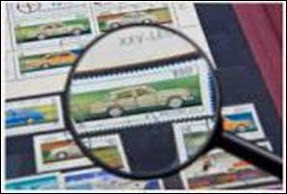 The goal of caring for your treasures does not have to be an overwhelming or all consuming task, particularly if you approach the project in phases. The most important thing you can do is to improve the overall "environmental conditions."
The goal of caring for your treasures does not have to be an overwhelming or all consuming task, particularly if you approach the project in phases. The most important thing you can do is to improve the overall "environmental conditions."
This can mean something as simple as moving boxes from a hot attic or damp basement to an area less prone to extreme temperature and humidity fluctuations. Many materials, especially paper and textiles, are hygroscopic, which means they are physically responsive to moisture and temperature changes.
Inappropriate environmental conditions promote harmful chemical reactions and encourage mold growth and insect activity. The accelerated deterioration manifests itself in visible signs of damage:
- cockling (distortions and rippling of paper)
- warping (of book covers, for example)
- foxing (reddish-brown spots on paper and textiles)
This is why it's imperative to move your treasures to an environment that will prevent further damage. Of course, most people store things in the basement or attic to get them out of the way. Fortunately, you don't always have to sacrifice prime living space to safeguard your collectibles.
You can safely store objects
- under a bed—as long as they are kept in a covered box
- in a closet—especially a closet set along an interior wall
- at the back of a bookshelf—if they are in small boxes
- on a high shelf in a finished basement—but avoid using shelving along exterior concrete walls or near the floor
Wherever you feel comfortable year round, so will your precious collections and heirlooms. Just remember—avoid displaying or storing your objects in well lighted areas; in hot, humid or excessively dry areas; or near exterior doors.
Caring for stamps and Postal History
by Krystyna Kościa ACR
To most people a stamp means an adhesive postage stamp, a small printed, gummed label to prepay postage. Other stamps can indicate that a tax or fee has been paid.
A postal history item refers to a piece of mail with or without postage stamps, with postal markings or connected with postal services.
A stamp is built up of several layers. Its base paper is coated with adhesive (gum arabic, PVA, pressure sensitive adhesive or others) on one side and a medium (ink, pigments, dyes) on the other. On modern stamps there are also phosphorescent or fluorescent coatings.
Postal history items such as covers and envelopes are also normally made of paper, possibly with gummed areas or pressure sensitive adhesive strips (envelopes) with markings (franking, stamps etc) in ink, dye, pencil, crayon and/or with gummed paper labels or seals.
It's in your own interests to ensure your collection is safeguarded against easily avoidable damage. Damage can be caused most readily by the following:
· The way items are handled
· The storage and display materials used
· Methods of display
· The effect of the conditions to which they are subjected, e.g. relative humidity and temperature, light and dust levels.
Keep in mind that items other than mint stamps have already been subjected to adverse handling and conditions through the postal system. They need all the help they can get from you.
There are several measures you can take to protect and preserve your collection.
· Before handling any paper items wash your hands
· Handle items as little and as carefully as possible, preferably using flat-headed tweezers
· Do not smoke near philatelic or postal history items
· Keep all drinks well away
All materials that come into direct contact with your stamps and covers etc. should be made of archival quality materials. For album pages and mounts this means alkaline buffered paper, free of lignin and ground wood; and protectors (pockets, sleeves or envelopes for album pages etc.) of chemically inert polyester, e.g. Melinex®, Mylar™ without surface coatings or plasticizers.
Plasticizers, used to make certain plastics more flexible, can cause off-setting of colours; in particular, PVC should never be used. Albums should be stored upright, not too tight nor over-packed. Slip-cases for albums (preferably with dye-fast covers) or boxes, further protect against dust and other atmospheric pollutants. Avoid self-adhesive tapes.
· Guard against sunlight or bright direct light (storage in albums is a boon)
· Avoid overlapping items as they will become unevenly discoloured either through light damage and/or by coming into contact with non-archival materials
· Black or coloured card, often used as a background when displaying stamps, is also a risk as it is acidic and the colours can run when damp, discolouring your stamps
Atmospheric factors which affect your collection primarily involve relative humidity and temperature. Try to avoid any drastic fluctuations in either. A change in relative humidity and temperature can cause damage through the uneven expansion or contraction of an item's different layers. So aim for stability in environmental conditions. Excessive humidity can cause mould growth and gum to become sticky. Dryness can make gum become brittle. Monitor the conditions in which your collection is kept, ensuring they are stable with a good air-flow.
Choose the location for your collection carefully. Avoid uninsulated attics, damp basements, over-drying central heating systems, outside walls and draughty windows.
If treatment is needed do not attempt to repair a damaged or deteriorating item yourself. If it is important enough, consult a professional paper conservator.
Courtesy – The British Postal Museum and Archives
Specialized Section
Some Remarkable Cancellations and Postmarks-22
Madras Circle Cancellations (Type 12, 12a, 12b)
Type 12 is a diamond formed by thick bars parallel to the short diagonal. The thickness and the number of bars vary considerable. A well-defined spaceis provided for the number. Diagonals are about 29 & 21 mm. Figures are 4 to 5 mm high. The earliest examples seen are from 1866.
1870 Cover from Purseewankum (Madras) to Bombay with Type 12 cancellation “10”, back-stamped “PURSEWANKUM/OC 28/1870” (Renouf Type 54), “EX/ MADRAS/OC 29/70”, “TOO LATE” in scroll (Renof T.77a) and UNCHRONICLED “M.D.” in oval.
Example of Renouf Type 12a cancellation: The space provided for the number is restricted. Diagonals are 25 & 19 mm and the figures are 4 mm high
1876 Postal Stationery Cover sent by registered post from Madras to Bombay 4 As. Adhesive cancelledby“1” Type 12a obliterator of Madras G.P.O., superimposed by “BOMBAY /2. DELY / MAR:19” and Madras Regd. Cachet (Type 62)
Example of Renouf Type 12a with restricted space for the number, diagonals are 36 ad 24 mm and figures are 5 mm high.
1871 Cover franked with a pair of Half Anna adhesives cancelled by Renouf T.12a cancellation of Manantoddy “87”, addressed to Colombo (Ceylon). On the front “MADRAS / INDIAUNPAID/1871/DE21” (UNCHRONICLED), in ms.”1 A. still due” B/S “MANANTODDY/DE 9/1871” (Type 54), “TOO LATE” (Type 77a), Hexagonal Sorting Marks of Madras & Calicut. Arrival Marks “COLOMBO/DE27/71/UNPAID and “GALLE/DE 26/71/UNPAID”
The following cover is with Renouf Type 12b cancellation where there is the letter “C” over the number, diagonals are 32 and 23 mm. Numerals are 3 mm high.
1872 Cover from Ahtoor (N0.204) to St. Jean de Bournay(Isere/France) franked by 11x Half Anna adhesives tied by “C/204” (Renouf T.12b) cancellation. On the front Sorting Mark of Masulipatam /T.P.O./DE24/72” and Board Stamp of FrenchVessel at Alexandria. B/S “SALEM/22DE/72”, “AHTOOR/””DE/72”, ”EX/BOMBAY/ 26DE72”+Arrival Marks of Marseilles (21.1.73) & St. JEAN de Bournay(22.1.73)
Route noted : Ahtoor 22.12.72- Salem 22.12.72- Masulipatam 24.12.72- The Key Point from which the letter was carried to Bombay, despatched from Bombay (26.12.72)- Alexandria (13.1.73), Marseilles (21.1.73) and overland to St. Jean de Bournay(22.1.73).Duration: 1 month. Postage Paid: 5 Annas& 4 Pies for letters not exceeding ¼ Ounce for France, as per 4 May 1872
- Dr. Avinash B. Jagtap email : abjagtap@hotmail.com
Mythical Serpents
© Satyendra Kumar Agrawal
Serpents and snakes play a role in many of the world's myths and legends. Hindu myths contain many tales of serpents. The naga primarily represents rebirth, death and mortality, due to its casting of its skin and being symbolically "reborn". According to Varaha Purana, three of the lower worlds, Patal, Atal and Sutal belong to the Nags. This is also called Nagloka, an immense domain crowded with palaces, houses, towers and pleasure gardens.
Nags are of divine extraction, because they are the children of Kadru, who herself is the descendant of sage Kashyap. Naga is the only deity which is associated with two of the three deities, Vishnu and Shiva, Vishnu being rested on 1000 headed naga and Shiva coiled him around his neck.
Lord Vishnu on multi headed Nag
Lord Shiva’s serpent in Sri Ranganathaswamy Temple, at Srirangam,
The naga is a common feature in Ganesha iconography too and appears in many forms: around the neck, use as a sacred thread (Sanskrit: yajñyopavīta) wrapped around the stomach as a belt, held in a hand, coiled at the ankles, or as a throne.
Nag as a sacred thread - cross and around the stomach of Lord Ganesh
In the great epic Mahabharata, nags are frequently characterized as having a mixture of human and serpent-like traits. Sometimes it characterized them as having human traits at one time, and as having serpent-like traits at another. The epic calls them "persecutors of all creatures", and tells us "the snakes were of virulent poison, great prowess and excess of strength, and ever bent on biting other creatures". At the same time, nagas are important players in many of the events narrated in the epic, frequently no more evil nor deceitful than the other protagonists, and sometimes on the side of good. Nags are not always the enemy of man and they even inter marry with them. Arjun of Mahabharata married a Nag girl named Uloopi. In India, certain communities called Nagavanshi consider themselves descendants of Nagas. Few cities in India are even named after naga. Nagpur is derived from Nagapuram meaning ‘city of nagas’. Anantnag, (Kashmir) and Takshila, an ancient place (now in Pakistan) are named after one of 12 prominent divine naga king mentioned in Hinduism. Indian state Nagaland is also meaning ‘land of nagas’. An Indian missile is also named ‘Naga’.
Naga Regiment
Many powerful mythological weapons used in Ram-Ravana and Kaurava-Pandavas wars were also derived from serpents. ‘Nagpash’ is one of them.
‘Nagpash’
The gigantic eagle king and vehicle of Lord Vishnu, Garuda is the great enemy of nags but also cousin of them.
Garuda is the great enemy of nags
The legend says that Kasyapa was a powerful sage and had many wives. Vinata and Kadru were sisters and his favorites. Kadru requested a blessing from her husband that she should have a large number of children, eventually she gave birth to 1,000 Naga serpents who chose to live underworld in the ocean depth.
Whereas Vinata requested saga for only two sons and laid 2 eggs out of them Arun, the charioteer of the Sun God, Surya and the gigantic mythical bird Garuda burst forward. Through a foolish bet, Vinata became enslaved to her sister, and as a result Vinata's son Garuda was required to do the bidding of the snakes. The agreement he reached with her captors was that she would be set free on the condition that Garuda seize the elixir of immortality found during “Churning of the Ocean of Milk”, held by the gods and bring it back to the serpents. Garuda brought it to them and put the pot with elixir on the ground but it was taken away by Indra. However, few drops remained on the grass. The nagas licked up the drops, but in doing so, cut their tongues on the grass, and since then their tongues have been forked.
Garuda became the implacable and terrible enemy of the serpents, killing and devouring them at every opportunity due to a continuous enmity has been going on between his mother and Kadru, the mother of serpents.
Stories involving the nagas are still very much a part of contemporary cultural traditions in predominantly Hindu regions of Asia (India, Nepal, and the island of Bali).They play a particularly important role in Cambodian mythology too.
A well-known story explains the emergence of the Khmer people from the union of Indian named Kaundinya and naga princess Soma. He came to Cambodia, and ruled this dominion defeating the naga king and marrying his daughter. The Khmer people are their descendants. Therefore still Cambodians say that they are "Born from the naga".
People in Thailand see naga as a holy creature and worship it in the temple. It allegedly lives in Mekong River. For Malay sailors, nagas are a type of dragon with many heads; in Java, the naga is a wealthy underworld deity and for Laotians they are beaked water serpents.
The ancient Egyptians considered the serpent to be a sacred symbol: it can be seen in the tip of the crown which the Pharaoh, king of Egypt, used to wear.
In India, nagas are considered nature spirits and the protectors of springs, wells and rivers. They bring rain, and thus fertility, but are also thought to bring disasters such as floods and drought. They are also associated with waters - rivers, lakes, seas, and wells—and are generally regarded as guardians of treasure. In literature many stories are woven around ‘Nagmani’, a mythical precious stone with magical power, worn by few nagas on their heads.
Expensive and grand rituals like Nagamandala are conducted in honor of nagas in Southern India where it is believed that they bring fertility and prosperity to their venerators. There are many Nag Temples also situated in various parts of India.
'Snake god' at Subramanian snake Templenear Mangalore, Karnataka, India
A famous festival of nags , known as ‘Nagpanchami’ is also celebrated in India and is dedicated to the worship of serpents mentioned in the great Hindu Puranas (Sanskrit encyclopedic texts containing cosmogonist histories, legends of gods and heroes, and other traditional material). These are Vasuki, Takshak and Shesh, all are kings of nags.
Shesha Nag
Shesh Nag (the serpent god) comprises an important part of Hindu mythology. As the reclining couch and the roofing canopy of the god Vishnu, it has been a god venerated by all and worshipped by many for centuries.
It is considered to be the king of the serpent race and the ruler of the infernal regions called Patal. God Vishnu sleeps over the bed of its coils while floating on the cosmic waters - Ksheersagar, or the Ocean of Milk during intervals of creation. This posture of the Lord over the snake Ananta is called Anantha Sayana. In Vaikunthlok Lord Vishnu rests on shesh nag and Goddess lakshmi serves him.
Lord Vishnu rests on Sheshnag
Shesh Nag is shown as five-headed or seven-headed, but more commonly as a many hundred-headed serpent, sometimes with each head wearing an ornate crown. He is also represented as one supporting the world on its hood and constantly sings the glories of Vishnu from all his mouths. But when he shakes his head, there are earthquakes.
Shesh Nag’s each head wearing an ornate crown
He is sometimes referred to as "Ananta", the timeless, because it does not die with destruction of the universe and as "Adishesha", which means First snake. It is said that when Adi-Shesha uncoils the time moves and creation takes place. When he coils back, the universe ceases to exist.
He also incarnated with Lord Vishnu in his ‘Rama’ and ‘Krishnavatars ‘ as his younger brother ‘Laxaman’ and older brother ‘Balarama’. Ramanuja and Prabhu Nityanand are also considered avatars of Sheshnaga.Patanjali is ichnographically depicted in naga form with naga canopy and is considered as emanation of Sheshnag. The city of Thiruvanathpuram is named after him as the ‘City of Lord Anant’.
In the Bhagavad-Gita, when in the middle of the battlefield Kurukshetra, Krishna explaining his omnipresence, says: "Of Nags, I am Ananta" indicating the importance of Ananta Shesh. During Nagpanchami, women worship Ananta the divine snake in temples.
Takshaka
Takskak Nag is described in Hindu scriptures as one of the powerful ruler of the snakes who killed king Parikshit, the grandson of Arjuna. According to legend described in Mahabharata, king Parikshit once insulted a great sage Shameekwhile he was engrossed in meditation and was cursed by the sage latter that he will die of a snake bite. To avoid the fulfillment of this curse, Parikshit built his palace on a single pillar surrounded by water with the belief that no snake could reach him crawling through the water. Then Takshak took up the challenge to honour the sage's words. He shrank his body and hid in an apple. Just as Parikshit was about to eat the apple, he sprang out of it to regain his original shape and bit the king.
In indignation, the king's son, Janamejay, kindled a huge sacrificial fire and upon his order the royal priests chanted powerful mantras (sacred utterance) which made all snakes fall into the fire. Takshak escaped and hideout in Khandava forest.
Some say, Takshak Naag stole the beautiful earrings of the queen of the King Pushya from Uttank who was taking them to give to his Guru Maataa as his Guru Dakshinaa. This theft led him to instigate Janamejaya to annihilate the Naag.
According to another legend, the god of fire, Agni went to the forest and attempted to burn it down, but he was thwarted by the king of Gods, Indra who was friend of Takshak and was not about to let his friend die a horrible death by immolation. He tried to extinguish the fire by causing rain fall, but Lord Krishna and Arjuna fired a dense cloud of arrows that blocked the raindrops from reaching the forest.
This episode is beautifully sculpted on the pediments of Banteay Seri at Angkor, Combodia.The rains, represented by detailed diagonal lines and above them all is Indra, the Sky God, giver of rain, riding atop his three-headed elephant, Erawat .Below them are Krishna and Arjuna on their Chariots with forest animals in panic. Takshat nag is carved in the middle of the scene.
Takskak Nag
Vasuki
He is a great King of the nagas and wears a precious gem with magical powers, ‘Nagamani’ on his head.
The most prominent legend in Hinduism concerning Vasuki is the famous incident of Samudra manthan, the churning the ocean of milk. The snake king allowed the devas (gods) and the asuras (demons) to use him as the churning rope around Mandara, a mountain positioned next to the ocean while they looked for the ambrosia of immortality. During the churning process, the incredible strain caused Vasuki to exhale ‘Halaha’, the most potent venom in the Universe. This venom threatened to destroy all living beings and perhaps the entire Universe. Lord Shiva, in order to prevent the destruction of the cosmos, decided to swallow the poison Himself. The venom turned his throat blue, earning him the title Nilakanta (blue-throated).
Vasuki is also mentioned and used as a tightening rope in other Hindu scriptures, Ramayana and Mahabharata.
In Ramayana He was used as ‘Nagpasha’, serpent coil, by Viswajit to coil Hanuman bringing him up to ravana’s court in Lanka. Ravan himself used this weapon to fatal Ram and Laxaman during Lanka war. Many destructive weapons were also used in both the great battles of ‘Lanka’ and ‘Kurukshetra’ based on him.
In Bhagavad-Gita, in the middle of the battlefield "Kurukshetra," Krishna explains his omnipresence by proclaiming, "Of weapons I am the thunderbolt; among cows I am the surabhi. Of causes for procreation I am Kandarpa, the god of love, and of serpents I am Vasuki."
Khmer sculptors of 12th century Angkor portrayed this episode in grand style in bas relief of Angkor Wat but can also be found at other temples such as Banteay Chhmar, Preah Vihear, Banteay Samre and many more and are twice represented at the Ta Prohm in Tonle Bati. On minor scale, Churning of the Ocean is also depicted in Beng Melea, on lintel of Ein Kosei, Siem Reap and Prasat Phnom Da.
Vasuki as the churning rope around Mandara during Samudra manthan
The so-called “Naga Bridges” of Angkor Thom and Preah Khanportrays Vasuki nag gracefully. In all five such bridges on one side of the bridge, ferocious demons are depicted hauling on Vasuki's head and upper body. On the other side of the bridge, majestic gods are shown hauling on Vasuki's tail and lower body.
Naga Bridges
The head and tail of Vasuki naga is rising up at each end of the bridge gracefully.
Interestingly, Vasuki is mentioned not only in Hindu mythology but also in Chinese and Japanese mythology as being one of the "eight Great Naga Kings".
In Buddhism, he is known as Mucalinda the protector of Buddha while in ecstatic meditation under Bodhi tree. When a storm arose, the mighty serpent king Mucalinda rose up from his place beneath the earth and enveloped the Buddha in seven coils for seven days, not to break his ecstatic state.
Mucalinda the protector of Buddha while in ecstatic meditation under Bodhi tree
He is also said to shelter the great spiritual champion of the Jains, Mahavira.
KALIYA
The single episode of Krishna lila, ‘Kaliya-marden’ or ‘Nag-natthayya’ (in English-‘Taming of Serpent) is performed each year in the month of Ramlila in many parts of India. An interesting legend exists in ‘Bhagavata Purana’ according to which, Kaliya was a poisonous naga living in a beautiful lake of the holy river Yamuna in Vrindavan. The water of the Yamuna for four leagues all around him boiled and bubbled with poison. No bird or beast could go near, and only one solitary Kadamba tree grew on the river bank.
The proper home of Kaliya was Ramanaka Dwipa (probably Fiji), but he chosen Vrindaban to save him from Garuda who by cursed not able to enter here without meeting his death.
Once Krishna and herd boys were playing ball, and while playing Krishna climbed up the Kadamba tree and hung over the river bank, the ball fell into the river and Krishna jumped after it. Kaliya rose up with his hundred and ten hoods vomiting poison and wrapped himself around Krishna's body. Krishna became so huge that Kaliya had to release him. So Krishna saved himself from every attack, and when he saw the Brij folk were so much afraid he suddenly sprang into Kaliya's head and assumed the weight of the whole universe, and danced on the naga's heads, beating time with his feet. Then Kaliya began to die. But then the naga’swives came and prayed to Krishna with joined palms, worshipping Krishna and praying for their husband.
Kaliya, recognizing the greatness of Krishna, surrendered, promising he would not harass anybody. So Krishna pardoned him and then let him go free to leave the river and go to Ramanaka Dwipa. Krishna gave him His assurance that Garuda would now do him no harm as he would respect the print of His Feet on hoods of Kaliya.
Another version of this legend is also available where description of only ball game is replaced like this- on a certain day while the cow-boys of Braja were out pasturing their calves on the wooded banks of the Yamuna they happened to feel thirsty and not knowing that the water of the lake had been poisoned by Kaliya drank of its water which resulted in their instantaneous death. On being apprised of their plight Krishna came to the spot and restored them to life. Thereafter Krishna got down into the lake with the intention of sporting in its water and tamed Kaliya.
‘Nag nathhayya’ has some spiritual significance too. Snake Kaliya with its numerous hoods symbolizes the numerous desires we have. When one desire gets fulfilled, another arises, like the new hoods of Kaliya. The hoods keep breaking and forming, but Krishna is unperturbed. He keeps playing His flute, denoting the power of discrimination, of wisdom, of the focus on the bliss of self. Also those who have a purpose to create trouble among the pure devotees of Krishna by infecting their nature with their own malicious disposition meet with a certain degree of initial success in their nefarious undertaking. This emboldens them to make a direct attack on Krishna Himself when He appears on the scene of their depraved activities in order to restore the living faith of His Own bonafide associates.
- Dr Satyendra Kumar Agrawal : email : rosephila@hotmail.com
New Stamps from other Countries
Philippines
27 June 2014 Aquatic Flowers
Amazon lily Victoria amazonica – Native to the Amazon River basic, Giant Water Lily is the largest size member of the Water lily family. The plant has very large leaves, up to 2-3 m in diameter, that float on the water’s surface on a submerged stalk, 7–8 m in length. The edges turn up to form a rim. Underside of leaf is coppery red. The flowers are white the first night they are open and become pink the second night, and purple subsequently. They are up to 9-12 inches in diameter, and are pollinated by beetles. The flowers are also strongly fragrant.
Water lily Nymphaea – Water lily (family Nymphaeaceae), any of 58 species in 6 genera of freshwater plants native to the temperate and tropical parts of the world. Most species of water lilies have rounded variously notched, waxy-coated leaves on long stalks that contain many air spaces and float in quiet freshwater habitats. The stalks arise from thick, fleshy, creeping underwater stems that are buried in the mud. The showy, fragrant, solitary flowers are borne at or above the water surface on long stalks that are attached to the underground stems.
Water hyacinth Eichhornia crassipes – Water hyacinth is a free-floating perennial aquatic plant (or hydrophyte) native to tropical and sub-tropical South America. With broad, thick, glossy, ovate leaves, water hyacinth may rise above the surface of the water as much as 1 meter in height. The leaves are 10–20 cm across, and float above the water surface.
They have long, spongy and bulbous stalks. The feathery, freely hanging roots are purple-black. An erect stalk supports a single spike of 8-15 conspicuously attractive flowers, mostly lavender to pink in color with six petals. When not in bloom, water hyacinth may be mistaken for frog’s-bit (Limnobium spongia).
Marsh marigold Caltha palustris – Also known as Kingcup, Marsh Marigold is most often found in soggy, ground such as wet woodland, ditches, stream margins, ponds, bogs and marshes. The flowers are held in loose, clusters on stout, hollow stems which also bear deep green, kidney shaped, fleshy leaves which increase in size after the plant has flowered. This is a native plant, it is poisonous and it belongs to the family Ranunculaceae.
Poland
18 July 2014 : Polish Regional Products
Gibraltar
Gibraltar Endemic Flowers : 15 July 2014
saxifrage Saxifraga globulifera Desf. var. gibraltarica Ser.
A herbaceous perennial which flowers between March and May. The leaves and stems are glandular-hairy, at first green, turning red, forming loose or dense, rounded clumps. The flowers are from 0.7 to 1 cm across, in clusters of 3 to 10. Not common, but this variety is endemic to Gibraltar. They grow in shady places, from limestone crevices, and on stony surfaces or old walls. The main stands are in the Rock Gun area and below, including the North Face, the Upper Galleries, and near the top of Mediterranean Steps.
Gibraltar restharrow Ononis natrix L. subsp. ramosissima (Desf.) Batt. var. ramosissima
A much branched, woody based, shrubby perennial which forms rounded clumps up to 80 cm across. The flowers clearly indicate that it is a member of the pea family. They appear between April and June. The leaves and stems are covered in short glandular hairs making the whole plant quite sticky, and resulting in the plant often being covered in grains of wind-blown sand. It is quite common in Gibraltar, but restricted to the East Side sand slopes, where the dark green clumps can be seen dotting the habitat. This variety is endemic to Gibraltar.
Gibraltar chickweed Cerastium gibraltaricum Boiss.
A loosely tufted, woody-based perennial, with much branched stems up to 30cm long. The leaves are glandular-hairy, sticky. The flowers appear between April and June, and are around 2 cm across, in lax terminal clusters. This plant is endemic to Gibraltar, but is not common. It usually grows from crevices in the limestone, and mainly found in two stands: one on the North Face and the other along Mediterranean Steps. Individual plants may be found in very scattered places on rocky outcrops along the top of the Rock and the east-facing cliffs.
Gibraltar candytuft Iberis gibraltarica L.
A robust, woody-based, branched perennial, which forms a small shrub up to 40cm across. The flowers appear between March and May, and grow in broad, flat-topped clusters up to 8cm across. They are common and widespread throughout the Upper Rock, but especially from crevices in the limestone cliffs and rocky outcrops, from the North Face all round to Europa Point. This species is a native of North Africa, but Gibraltar is the only other place outside Africa where it grows in the wild.
Gibraltar campion Silene tomentosa Otth. (S. gibraltarica Boiss.)
A woody-based perennial, branching from the base, with stems up to 70cm tall. The fragrant flowers appear from April to May, and are between 1.8 cm and 2.4 cm across, arranged in branched panicles. Their colour ranges from almost white to a deep violet. This is a very rare species which is endemic to Gibraltar, and grows from crevices in the limestone. It was believed extinct for almost a century until re-discovered by Leslie Linares in 1979. Since then, the only recent sightings of this plant in the wild have been in 1985, 1994 and 2008. Attempts at growing plants from seed at the Alameda Botanic Gardens have been hugely successful, as have been the attempts to do so from seed and from micro-propagation at the Royal Botanic Gardens at Kew. However attempts, to date, at re-introducing the garden-grown plants into the wild have not been very successful.
Gibraltar thyme Thymus willdenowii Boiss.
A woody and much branched, strongly aromatic, perennial dwarf shrublet, up to 30 cm across, usually spreading and growing flat against rock surfaces. Leaves to 1 cm long, densely hairy, lanceolate with inrolled margins. The flowers appear between April and June, small, white to pale violet, forming dense, rounded or elongated heads from 1.5 to 2 cm long. Common and widespread throughout the Upper Rock, though mainly along the upper parts. Grows from limestone crevices in clearings and along waysides. Believed to be endemic to Gibraltar, though some reports link it to North Africa.
Gibraltar sea lavender Limonium emarginatum (Willd.) Kuntze
A hairless perennial forming dense, dark green, rounded clumps from 10 to 30 cm across. The flowering stems reach up to 60cm long, branching widely in the upper parts. The flowers are about 8 mm across, violet to pink, in compact clusters 2 to 3 cm long. They appear between April and September. Very common on Gibraltar’s coastal rocks and cliffs all round the littoral, from Catalan Bay to Europa Point and around to Camp Bay. This species is endemic to the Strait of Gibraltar.
Singapore
18 July 2014 : Land Marks of Singapore
New stamps from Singapore featuring images of four landmarks: The Main Jetty (2nd local), Chek Jawa (S$0.65), the Wayang Stage (S$0.80) and a Quarry (S$1.10).The Islands of Singapore stamps were launched by SingPost and the National Heritage Board.
The Lighter Side
“The Lindau Messenger” – An ancient courier service
The Liechtenstein Post will issue a special stamp on 1st September 2014 to commemorate an ancient courier service “The Lindau Messenger”. The Lindau Messenger was a courier service operated between Lindau at Lake Constance and the Italian city of Milan up to the beginning of the 19th century. The Lindau Messenger transported goods, money and letters, crossing through areas of Germany, Austria, Liechtenstein, Switzerland and Italy on his way.
Each of the first four countries named is currently issuing its own stamp on this topic. The Liechtenstein stamp “Lindauer Bote” (value: CHF 1.40) shows suitable pictorial elements and gives the names of each stop. In addition, the altitude profile of the route, which reached its peak on Splügen Pass at 2113 metres above sea level, is depicted on the small 8-stamp sheet.
The exact date when the Lindau Messenger started to operate is not documented. However, it is assumed that he was already travelling along the arduous route on a fairly regular basis towards the end of the 15th century. In good weather, he completed the journey in five-and-a-half days but in snow and ice the trip took quite a bit longer.
At that time, Lindau and Milan were trading centres and re-loading points at crossroads of traffic routes. They thus became the points of departure for transports across the Alps. The messenger brought home luxury goods such as silk, gold thread, textiles of all kinds, exotic fruit and weapons.
Towards the end of the 17th and at the beginning of the 18th century, individual travellers were also allowed to accompany the messenger, the most famous of whom was Johann Wolfgang von Goethe. He used the guidance of the Lindau Messenger across the Alps in May 1788 when returning to Germany from his travels in Italy and paid 122 guilders for it. In 1826 the transport services of the Lindau Messenger were stopped for political and economic reasons.
ELIZABETH TAYLOR
An artwork called "Liz Taylor-Stamp Art" is seen at the newly renovated Ripley's Believe it or Not Museum in California. British artist Peter Mason created this portrait of Hollywood legend Elizabeth Taylor using only postage stamps from the 1950s and 1960s, the heyday period for the actress.
Promotional Section
Stamps Today – Stamp & Coin Magazine edited by Vijay Seth. Annual Subscription India Rs 250 Overseas Rs 900 . To subscribe please contact at email : stampstodayindia@gmail.com
Book on Tagore stamps and covers
Rabindranath Tagore and The Post Office - A Philatelic Tribute
The book “ Rabindranath Tagore and The Post Office - A Philatelic Tribute “ edited by noted artist and philatelist Shri Dipok Dey has been published by Rammohun Library and Free Reading Room, Kolkata.
This book gives details with colorful illustrations of all the stamps along with First Day Covers, Postmarks, Souvenir sheets, Miniature sheets, special covers, special postmarks, Booklets, Maximum Cards, Picture Post cards , catch Covers etc.
The other details of the book are given below :
Rabindranath Tagore and The Post Office - A Philatelic Tribute Edited by Dipok Dey - Hardbound - Pages 64 - Price Rs 575. - Published by Rammohun Library and Free Reading Room, 267 Acharya Prafulla Chandra Road, Kolkata – 700009. email : rammohunlibraryafrr@gmail.com Ph. 033 – 700009 ( Please contact from 2PM to 6PM except Saturday and Sunday)
History of Indian Miniature Paintings Through Philately by Dr Satyendra Kumar Agrawal published by PHILAGOLD Publications, Pages 80, Price Rs 1200 / US $ 25
History of Indian Miniature Paintings Through Philately is a beautiful Coffee Table Book by renowned philatelist and philatelic author Dr Satyendra Kumar Agrawal. The book is based on deep research of different schools of Indian Art by Dr Agrawal. The study has been narrated through beautiful images of various philatelic items issued all over the world. The book is divided into 14 chapters with details of paintings from different schools of Indian Art. The most attractive part of the book is its fine and rich printing. The book has been presented by the author in a very aesthetic way that on first sight it captures the attention of the reader.
The book is available with Dr Satyendra Kumar Agrawal
email - rosephila@hotmail.com
Antarctic Expedition-Philatelist's Guide" by Abhai Mishra
Indian involvement with Antarctic Expeditions dates back to year 1911 when Captain Scott attempted to reach the South Pole. The book traces the history of Indian Antarctic Expeditions through mails and letters carried with the expedition. It documents the Indian Antarctic postal history through cancellations, cachets, labels, envelopes, letter heads, QSL cards, postcards used during the expedition. The book reveals very rare and lesser known facts of Antarctica.
For more details please contact :
Abhai Mishra : email : abhai_mishra@rediffmail.com
Blogs & Websites
1. Praful Thakkar’s Exotic gallery of Indian Philately - http://www.indianphilatelics.com/ : It is a complete website on Indian Philately created by noted philatelist Mr Praful Thaakkar
2.. Welcome to the World of Indian Philately - http://www.indianphilately.net/
An exclusive website created by Mr Prashant Pandya dedicated to Indian Philately .The philatelists can register for “ Online Philatelists’ Directory ” on this website.
3.Virtual Stamp Club http://www.virtualstampclub.com/index.html It is website for On Line collectors. Membership is free. Many collectors around the world are its members.![]()
4. Stamp Magazine - http://blog.stampmagazine.co.uk/ This blog is updated by Adrian Keppel every Friday with new Articles on a variety of subjects.
5.Indian Thematics - http://www.indianthematics.blogspot.in/ - A new blog created by noted Thematic Philatelist Mr Dinesh Chandra Sharma. This blog is all about Thematic Philately.
6. Indian Philatelists’ Forum - http://groups.yahoo.com/group/indianphilatelists/
This is an electronic discussion forum dedicated exclusively to Indian Philately that allows members to engage into meaningful discussions on all aspects of Indian Philately. Membership to the forum is open to all philatelists who have interest in Indian Philately. Members can share and discuss their ideas, knowledge, research, collections, events, exhibitions, auctions, publications exclusively related to Indian Philately.
7. The best stamps - http://thebeststamps.blogspot.co.uk/ It’s a beautiful blog created by Julian Fernandes of Pune ( Now living in UK) featuring lovely stamps of birds with the photos of the same birds giving a wonderful look !!
8. Numismatic & Philatelic Association - http://numismaticphilavellore.site40.net/index.htm - This Numismatic & Philatelic Association is a nonprofit and non-trade motive association that aims to promote the hobbies – Philately (Stamp Collection) and Numismatics (Coin Collection) among children, students, interested individuals among the general public and especially for the budding philatelists and numismatists.
9. How to Collect Stamps - http://www.howtocollectstamps.com/ : The Complete Guide To Stamp Collecting
10.GANDHI Stamps & Philately Study Circle : http://gandhistampsclub.blogspot.in/ - A new Blog by Ketan Patel .…. Saving Gandhi Philately by trying to bring awareness and exposing illegal activities in Gandhi Stamps and Philately.
11. Europa Stamps : http://europa-stamps.blogspot.in/ : A blog on Europa, cept, norden & sepac stamps
12. Phila Mirror : http://philamirror.info/ : The Indian Philately Journal
13. Se- tenant Stamps of India - http://setenantsofindia.blogspot.com/ It is a specialized Blog on se-tenant stamps.
14. Flags & Stamps - http://flagstamps.blogspot.com/ - It is a specialized blog on Flag Theme .
15. Glimpses of Modern Indian Philately : http://modernindianphilately.blogspot.com/ - It is a specialized blog on Modern Philately, created by Mr Prashant Pandya .
16. Question & Answers on Philately : http://en.allexperts.com/q/Stamps-Philately- 1610/indexExp_69442.htm - It is a site based on Question & Answers on Philately. Mr Prashant Pandya replies to queries.
17. Philatelic Journalists Forum - http://philatelicjournalistsforum.blogspot.in/ “The Philatelic Journalists” is an initiative by a few enthusiast philatelists, who love the hobby to the deepest.
18. The Philatelist - http://o-filatelista.blogspot.in/ - A blog with lot of info about stamps and philatelic activities around the world.
19. Phila India - http://philaindia.info/index.html - Website created by Mahesh Reddiar with lot of info and articles on philately .
20. Princess Diana – Queen of Hearts - http://princessdiana-queenofhearts.blogspot.in/ - New Blog by noted philatelist of Orissa Mr Santanu Panigrahi.
Philatelic Clubs & Societies
Baroda Philatelic Society - http://www.vadophil.org/
Deccan Philatelic Society – Pune, Maharashtra
Eastern India Philatelists’ Association - http://www.filacapsule.blogspot.com/
India Study Circle - http://www.indiastudycircle.org/
Indian Stamp Ghar - http://www.indianstampghar.com/
Indian Thematic Society, Ludhiana - http://indianthematicstamps.webs.com/
Ludhiana Philatelic Club
Mobile Philately - http://www.mobilephilately.webs.com/
Numismatic & Philatelic Association of Vellore Fort http://numismaticphilavellore.site40.net/index.htm
Philatelic Society of Rajasthan, Jaipur
Rainbow Stamp Club - http://rainbowstampclub.blogspot.com/
Rajkot Philatelic Society – Rajkot, Gujarat
Gujarat Philatelic Association - Ahmedabad
South India Philatelists Association - http://www.sipa.org.in/
Stamps of India - http://www.stampsofindia.com/
The Army Philatelic Society, Pune
Current Philatelic Magazines – Newsletters
Stamp of India Collectors’ Companion - India’s first weekly e-newsletter edited by Madhukar and Savita Jhingan from Stamps of India, New Delhi. E-mail: mjhingan@yahoo.com Website: www.stampsofindia.com
India Post – Quarterly Journal of the India Study Circle publishes original articles submitted by members of ISC.
ITS Stamp News - Quarterly - Editor: Suraj Jaitly Publisher: Indian Thematic Society website - http://itsstampnews.blogspot.com/
VADOPHIL, Editor - Prashant Pandya and published by Baroda Philatelic Society, Vadodara. Website -http://www.vadophil.org/
Journal of the Army Philatelic Society : Editor – Col Jayanta Dutta
SIPA Bulletin - published by South India Philatelists’ Association, Chennai website : http://www.sipa.org.in/
GPA News – Editor - Published by Gujarat Philatelists’ Association, Ahemadabad.
Stamps Today – Stamp & Coin Magazine edited by Vijay Seth
RAINBOW STAMP CLUB
This is a blog of e-stamp Club www.rainbowstampclub.blogspot.com . The idea of this blog is to extend philatelic fraternity in all corners of the world. Readers may write about themselves with their collecting interests and share new ideas with other philatelists. New Post on recent issues, news on stamp activities and Contribution by members are published every day on this blog.Readers may also express their views on any philatelic matter which will be published under Club News at Rainbow Stamp Cub Blog. Philatelic Clubs and Societies may also send brief write ups. News about new issues of India and abroad and other information related with Philately are regularly posted on this blog. Readers may send reports on new issues, special covers, cancellations & philatelic activities of their area for inclusion in this Blog. - Editor
Courtesy - News and Image Resource to this issue : International Stamp News; Indian Philately Digest ; Dipok Dey – Kolkata; Prashant Pandya – Vadodara; Sreejesh Krishnan – Trivandrum ; Mahesh Parekh- Chennai; Jagannath Mani – Bangalore, Bibhu Mishra – Bhubaneshwar ; Wolfgang Beyer & Wolfgang Hoelzl – Germany; MB’s stamps of India ; Dakia Dak Laya ; Sandeep Chaurasia - Gorakhpur
Address for communication:
Jeevan Jyoti, c / o Mr. Ajay Srivastav Wildlife Institute of India, Post Box No. 18, Chandrabani, Dehradun – 248001. India
E-mail – j.jyoti9@gmail.com
![]() Last date for receiving write ups – 25th of every month. Kindly send images in jpg compressed format & text in MS Word only.
Last date for receiving write ups – 25th of every month. Kindly send images in jpg compressed format & text in MS Word only.
![]() If you liked this issue please forward it to your friends and help in promoting philately.
If you liked this issue please forward it to your friends and help in promoting philately.
A Request to Readers & Contributors -
![]() Please do not send the text in scan form or PDF. Send your write ups in MS Word only.
Please do not send the text in scan form or PDF. Send your write ups in MS Word only.
Kindly specify your contribution such as article/News/ Reader’s Right / Beginners’ Section/ Lighter Side etc.
![]() Please do not send forwarded messages for promotional section if you want to give any information for promotion please write personally with brief write up. As this newsletter is not used for any commercial purpose in any manner.
Please do not send forwarded messages for promotional section if you want to give any information for promotion please write personally with brief write up. As this newsletter is not used for any commercial purpose in any manner.
Attention -
Please send limited number of images in compressed jpg format only with your article. Please send text and images separately. Please do not send text or image for publication in PDF.
Any material from this newsletter may be reproduced only with the written permission from the editor.
…..Happy Collecting…………………………………………………………………
Rainbow Stamp News is edited and published monthly by Jeevan Jyoti, from Dehradun ( Uttarakhand) India.



